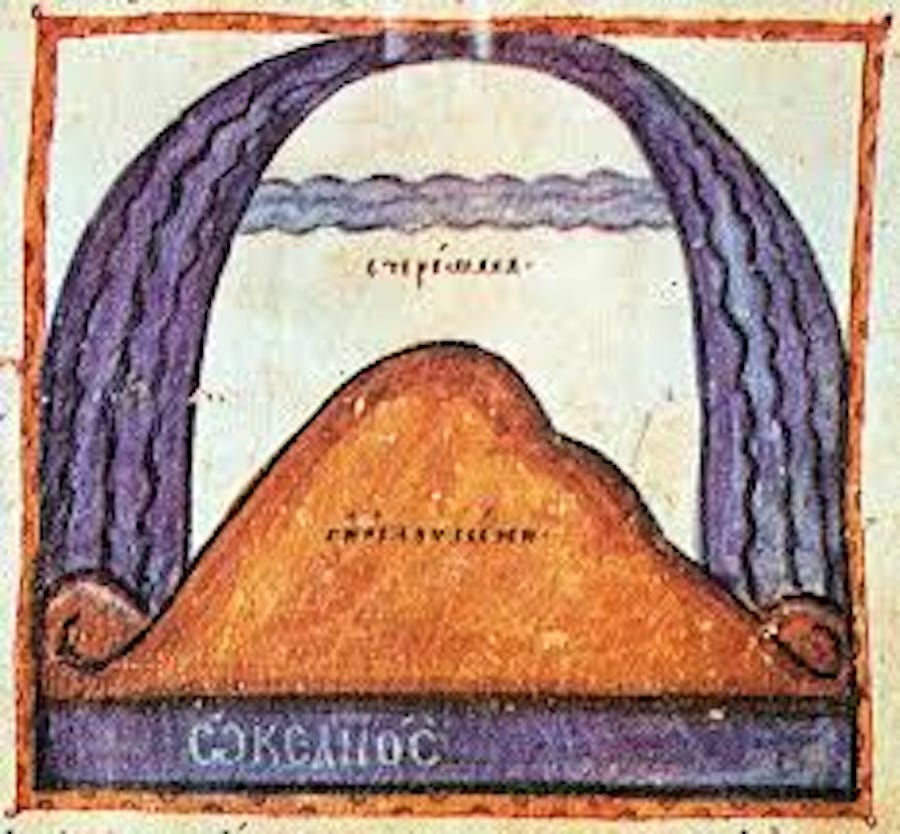"Christian Topography" by Cosmas Indicopleustes PDF — FREE
6th Century Church Father Defends Flat Earth Against Pagan Philosophy
Again, I have Danny Faulkner to thank for this gem. I will provide commentary on Faulkner’s sophistry concerning this book in a future post.
Here, I’d like to provide background for this work and discuss how the editor of Christian Topography, J.W. McCrindle, is a hostile witness against Cosmas Indicopleuste, whom I will call Cosmas. If you want to download the free PDF in English or Greek, I will provide links at the end of the post.
Cosmas was a 6th-century church leader who wrote from the position that the Christian church understood and believed in a flat earth, enclosed by a solid firmament. According to Cosmas, counterfeit Christians and pagan philosophers had infiltrated the church and were teaching the pagan concept that the earth was spherical.
His cosmological concept differs somewhat from the modern Biblical Flat Earth. I will dig into this more in my review of Falling Flat. Yet, Cosmas holds firmly to an immovable solid firmament, wherein the luminaries move. The immovable firmament is critical to his discussion because the Greek philosophers of his day believed that solid spheres moved about the spherical earth. Thus, he defends against the primitive pagan understanding of a spherical earth prevalent in his day.
Poisoning the Well
As you read through the front matter, remember that the editor is unfavorable to Cosmas’ cosmology. In the Preface and Introduction, McCrindle poisons the well, mocks Cosmas, and paints him as a heretic. Yet, the Preface and Introduction are worth reading for historical context. Only recognize McCrindle’s antagonistic approach.
For example, in the Preface, McCrindle writes concerning Christian Topography:
The boldness and perverse ingenuity with which its author, from a long array of irrelevant scripture texts, seeks to construct an impossible theory of the universe can scarcely fail to astonish everyone who reads it.
On a positive note, McCrindle claims that he presents a literal translation of Cosmas’ work “as far as the exigencies of idiom would permit.” I’m giving McCrindle the benefit of the doubt as literalism would only, to him, make a mockery of Cosmas. Yet, I’m not 100% convinced this is true, as I have found some discrepancies. For those who want to dig deeper, they can look at the Greek version to see how the translation compares.
Additionally, in the Introduction, McCrindle falsely accuses Cosmas of being part of the heretical sect of the Nestorians. The first paragraph of Christian Topography debunks this accusation, as Cosmas appeals to the Trinity.
In the name of the Father and of the Son and of the Holy Ghost—the one adorable Godhead in three Persons—the con-substantial and life-originating Trinity of the one God, from whom every good gift and every perfect gift comes down to us from above. I, a miserable sinner, open my slow and stammering lips, trusting that for my humility’s sake in soliciting utterance, and for the advantage of my hearers, He will give me the spirit of wisdom and utterance in the opening of my lips: He who is the Lord of Grace and Dispenser of all good things; God over all and blessed forevermore, Amen!
With that in mind, please read the Preface and Introduction with discernment — as additional unprofitable things are written there.
Here also is the Greek version of Christian Topography. I have not analyzed the introductory matter in this book (which is in English), so caution is advised.
My main purpose for sharing these resources is to fight against the false narratives perpetuated in the pulpit and parachurch organizations — and to empower and embolden YOU with the truth.





